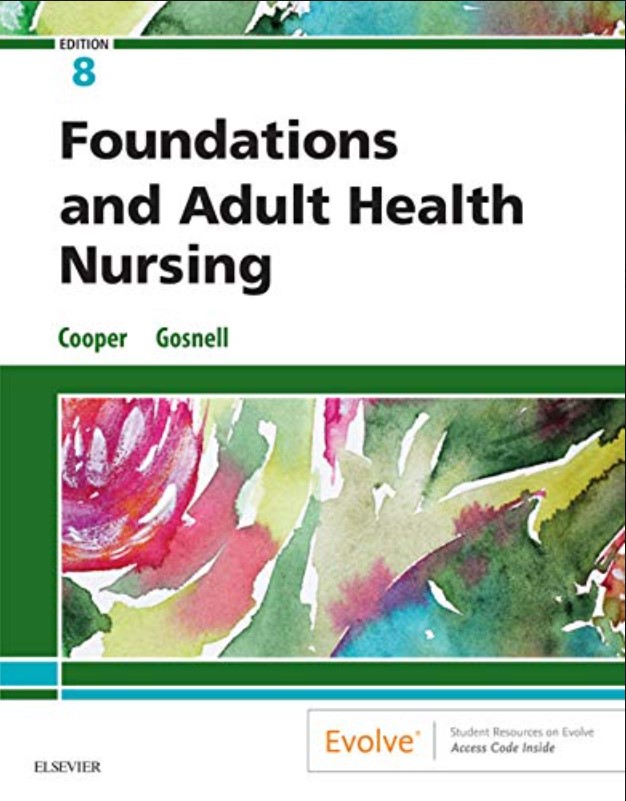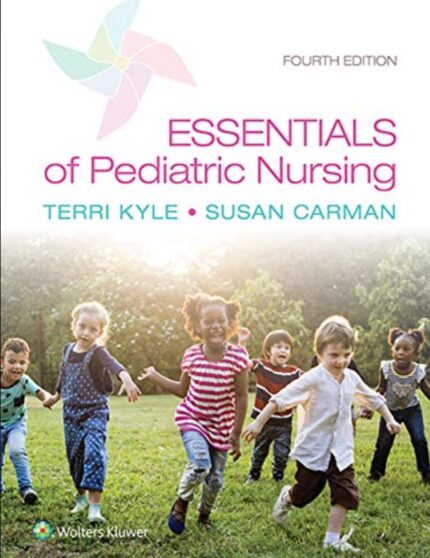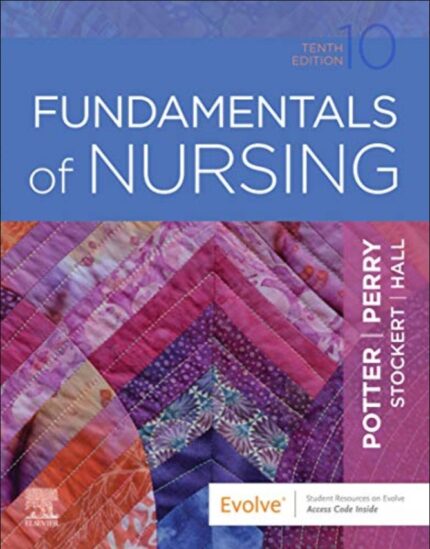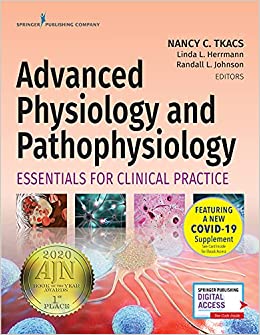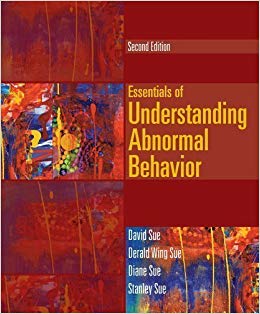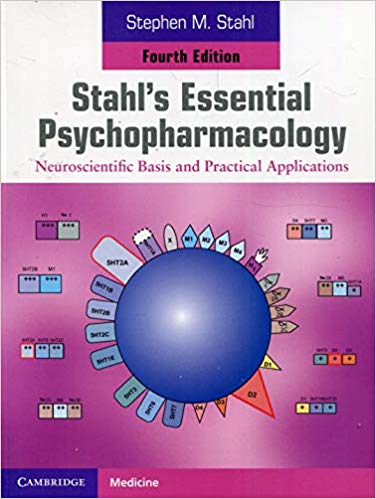Test Bank for Foundations and Adult Health Nursing 8th Edition Cooper
Chapter 01: Introduction to Anatomy and Physiology
MULTIPLE CHOICE
1. The anatomic term means toward the midline.
a. anterior
b. posterior
c. medial
d. cranial
ANS: C
The term medial indicates an anatomic direction toward the midline.
DIF: Cognitive Level: Knowledge REF: 1 OBJ: 2
TOP: Anatomic terminology KEY: Nursing Process Step: Assessment
MSC: NCLEX: Physiological Integrity
2. What are the smallest living components in our body?
a. Cells
b. Organs
c. Electrons
d. Osmosis
ANS: A
Cells are considered to be the smallest living units of structure and function in our body.
DIF: Cognitive Level: Knowledge REF: 4 OBJ: 6
TOP: Structural levels of organization KEY: Nursing Process Step: N/A
MSC: NCLEX: Physiological Integrity
3. What is the largest organelle, responsible for cell reproduction and control of other
organelles?
a. Nucleus
b. Ribosome
c. Mitochondrion
d. Golgi apparatus
ANS: A
The nucleus is the largest organelle within the cell.
DIF: Cognitive Level: Knowledge REF: 5 OBJ: 8
TOP: Parts of the cell KEY: Nursing Process Step: Assessment
MSC: NCLEX: Physiological Integrity
https://studentmagic.indiemade.com/
4. When the patien
ll indicate discomfort in
which body cavity?
a. Pelvic
b. Mediastinum
c. Dorsal
d. Abdominal
ANS: A
A subdivision called the pelvic cavity contains the lower portion of the large intestine (lower
sigmoid colon, rectum), urinary bladder, and internal structures of the reproductive system.
DIF: Cognitive Level: Comprehension REF: 3 OBJ: 5
TOP: Body cavity KEY: Nursing Process Step: Assessment
MSC: NCLEX: Physiological Integrity
5. The four phases of cell division all occur in:
a. diffusion.
b. mitosis.
c. osmosis.
d. filtration.
ANS: B
During mitosis, the cell goes through four phases: prophase, metaphase, anaphase, and
telophase.
DIF: Cognitive Level: Knowledge REF: 7 OBJ: 9
TOP: Cell division KEY: Nursing Process Step: N/A
MSC: NCLEX: Physiological Integrity
6. Telophase is which phase of cell reproduction during mitosis?
a. First phase
b. Latent phase
c. Final phase
d. Spindle phase
ANS: C
During this final phase of cell division, the two nuclei appear and the chromosomes disperse.
DIF: Cognitive Level: Knowledge REF: 7 OBJ: 9
TOP: Cell division KEY: Nursing Process Step: N/A
MSC: NCLEX: Physiological Integrity
7. The nurse is aware that which muscle group is both striated and involuntary?
a. Skeletal
b. Glial
c. Cardiac
d. Visceral
ANS: C
The cardiac muscle is both striated and involuntary.
DIF: Cognitive Level: Knowledge REF: 9 OBJ: 11
TOP: Tissues KEY: Nursing Process Step: Planning
MSC: NCLEX: Physiological Integrity
8. What is a group of several different kinds of tissues arranged so that together they can
perform a more complex function than any tissue alone?
a. Organ
b. System
c. Cell
d. Endoplasmic reticulum
ANS: A
When several kinds of tissues are united to perform a more complex function than any tissue
alone, they are called organs.
DIF: Cognitive Level: Knowledge REF: 11 OBJ: 7
TOP: Organs KEY: Nursing Process Step: N/A
MSC: NCLEX: Physiological Integrity
9. What traits describe visceral muscles?
a. Smooth and voluntary
b. Smooth and involuntary
c. Striated and voluntary
d. Striated and involuntary
ANS: B
Visceral (smooth) muscles will not function at will; thus, they act involuntarily.
DIF: Cognitive Level: Knowledge REF: 9 OBJ: 7
TOP: Tissues KEY: Nursing Process Step: Assessment
MSC: NCLEX: Physiological Integrity
10. How are the thoracic and abdominal cavities separated?
a. By the pleura
b. By the diaphragm
c. By the sagittal plane
d. By the peritoneum
ANS: B
The diaphragm (a muscle directly beneath the lungs) separates the ventral cavity into the
thoracic (chest) and abdominal cavities.
DIF: Cognitive Level: Knowledge REF: 2 OBJ: 3
TOP: Ventral cavity KEY: Nursing Process Step: Assessment
MSC: NCLEX: Physiological Integrity
11. What is the broad section of biology dealing with the description of human structure?
a. Hematology
b. Anatomy
c. Kinesiology
d. Physiology
ANS: B
Anatomy is the study, classification, and description of the structure and organs of the body.
DIF: Cognitive Level: Knowledge REF: 1 OBJ: 1
TOP: Terminology KEY: Nursing Process Step: N/A
MSC: NCLEX: Physiological Integrity
12. explains the processes and functions of many structures of the body and how they
interact with one another.
a. Anatomy
b. Mitosis
c. Filtration
d. Physiology
ANS: D
Physiology explains the processes and functions of the various structures and how they
interrelate with one another.
DIF: Cognitive Level: Knowledge REF: 1 OBJ: 1
TOP: Terminology KEY: Nursing Process Step: N/A
MSC: NCLEX: Physiological Integrity
13. The anatomic structure that is not in the thoracic cavity is/are the .
a. heart
b. lungs
c. blood vessels
d. transverse colon
ANS: D
The transverse colon is located in the abdominal cavity.
DIF: Cognitive Level: Comprehension REF: 3 OBJ: 5
TOP: Thoracic cavity KEY: Nursing Process Step: Assessment
MSC: NCLEX: Physiological Integrity
14. When several organs and parts are grouped together for certain functions, they form:
a. tissues.
b. systems.
c. cells.
d. membranes.
ANS: B
A system is an organization of varying numbers and kinds of organs arranged so that together
they can perform complex functions for the body.
DIF: Cognitive Level: Knowledge REF: 4 OBJ: 7
TOP: Systems KEY: Nursing Process Step: Assessment
MSC: NCLEX: Physiological Integrity
15. What are the distinct surface proteins of the plasma membrane essential in determining?
a. Tissue typing
b. Blood count
c. Effectiveness of a drug
d. Sexual maturity
ANS: A
The plasma membrane has distinct surface proteins as coming from one individual. This is the
basis for the procedure of tissue typing to determine compatibility before an organ transplant.
DIF: Cognitive Level: Comprehension REF: 5 OBJ: 12
TOP: Cells KEY: Nursing Process Step: Assessment
MSC: NCLEX: Physiological Integrity
16. In anatomic terminology, posterior means toward the:
a. tail.
b. head.
c. back.
d. trunk.
ANS: C
The posterior is toward the back.
DIF: Cognitive Level: Knowledge REF: 1 OBJ: 2
TOP: Anatomic terminology KEY: Nursing Process Step: Assessment
MSC: NCLEX: Physiological Integrity
17. What does the transverse body plane divide?
a. The front and back (coronal) of the body
b. The body lengthwise (two equal halves)
c. The superior and inferior portions of the body
d. The body into axial and appendicular
ANS: C
The transverse plane cuts the body horizontally into the sagittal and the frontal planes,
dividing the body into caudal and cranial portions.
DIF: Cognitive Level: Knowledge REF: 2 OBJ: 3
TOP: Body planes KEY: Nursing Process Step: Assessment
MSC: NCLEX: Physiological Integrity
18. Caudal is defined as toward t
NheU
RS
I.
a. head
b. feet
c. tail
d. chest
ANS: C
Caudal is a directional word that indicates toward the “tail,” the distal portion of the spine.
DIF: Cognitive Level: Knowledge REF: 1 OBJ: 3
TOP: Anatomic terminology KEY: Nursing Process Step: Assessment
https://studentmagic.indiemade.com/
MSC: NCLEX: Physiological Integrity
19. What is the term for movement of water from an area of lower solute concentration to an area
of higher solute concentration?
a. Absorption
b. Filtration
c. Diffusion
d. Osmosis
ANS: D
Osmosis is the passage of water from less concentrated solution to more concentrated
solution.
DIF: Cognitive Level: Knowledge REF: 8 OBJ: 10
TOP: Transport processes KEY: Nursing Process Step: Assessment
MSC: NCLEX: Physiological Integrity
20. What is the type of tissue composed of cells that contract in response to a message from the
brain or spinal cord?
a. Epithelial
b. Connective
c. Membrane
d. Muscle
ANS: D
Muscle tissue is composed of cells that contract in response to a message from the brain or
spinal cord.
DIF: Cognitive Level: Knowledge REF: 9 OBJ: 7
TOP: Tissues KEY: Nursing Process Step: Assessment
MSC: NCLEX: Physiological Integrity

